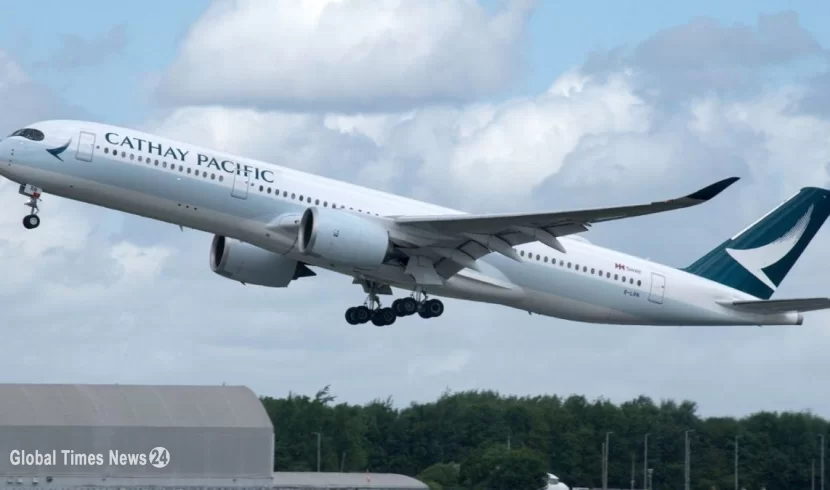Business activity in non-oil sectors in Saudi Arabia expanded at its slowest pace in two years last month, according to a survey. The data indicated a significant deceleration in the growth of new orders, pointing to a decline in demand.
In January, Saudi Arabia's Riyadh Bank Purchasing Managers' Index decreased to 55. 4 from 57. 5 in December, marking its lowest level since January 2022.
The manufacturing sub-index dropped to 58. 1 last month from 61 in December, although it continued to show an upward trend. However, the growth rate of new orders declined to 60. 5 last month from 68. 3 in December, signaling a slowdown in demand momentum.
The decline in the growth rate of new orders is partly due to heightened competition impacting order registrations. Additionally, the decrease in export orders, marking the fourth decline in the last 6 months, is linked to reduced demand and challenging economic conditions.
The survey revealed that purchasing costs have increased at the quickest rate since May 2012, with certain participants mentioning elevated transportation expenses related to the Red Sea, along with rising material costs and supply chain risks.
As per a Reuters report, Naif Alghaith, the chief economist of Riyadh Bank, mentioned that the non-oil economy has shown growth despite facing challenges from increasing costs and interest rates. Business confidence regarding January activity declined, with some respondents expressing concerns about weakening demand and inflationary pressures in the upcoming 12 months.
This underperformance is not limited to Saudi Arabia's non-oil economy but also impacts its oil economy. In October, the International Monetary Fund forecasted that Saudi Arabia's GDP growth rate, which saw a significant slowdown in 2023 due to lower oil prices and decreased production, is expected to reach four percent in 2024.
In the October report, this global lender had projected Saudi Arabia's economic growth rate for 2023 at 0. 8%. However, in its latest report, the forecast for Saudi Arabia's economic growth has been substantially reduced, now estimating that the country's GDP has contracted by 1. 1 percent.
The government of Saudi Arabia has estimated the GDP growth rate for 2023 to be 0. 03%, but official statistics have not been published yet.
Saudi Arabia is currently in the midst of Mohammed bin Salman's 2030 vision. The objectives of this initiative were outlined to enhance non-oil sectors like tourism and manufacturing, diversify public revenue sources, reduce dependence on hydrocarbons, and generate employment opportunities for citizens. However, the current observations in practice seem to deviate from the initial goals set forth.
In the realm of tourism, rather than focusing on implementing tourism projects and investing in such initiatives, Mohammed bin Salman has opted to bring in costly football players and various actors from the Arab world and beyond, each of which has incurred significant expenses amounting to billions of dollars.
In the realm of job creation, the projects championed by Bin Salman have predominantly generated employment opportunities for foreigners, particularly Western technicians, who have been brought in to actualize Bin Salman's ambitious and expansive plans, rather than creating jobs for the local population of Saudi Arabia. Recently, the execution of numerous plans has been delayed due to financial constraints, leading to discussions about potentially extending the timeline of Mohammed bin Salman's 2030 vision to a 2050 vision.
The incomplete implementation of these plans has notably contributed to the budget deficit, which is expected to be addressed by imposing taxes on the Saudi population to the maximum extent possible.
News ID : 2946
 EU imposes additional tariffs on Chinese electric cars
Bussiness / Breaking News
EU imposes additional tariffs on Chinese electric cars
Bussiness / Breaking News
 Ukraine plans 20% reduction in energy consumption
Bussiness / Breaking News
Ukraine plans 20% reduction in energy consumption
Bussiness / Breaking News
 Treasury chief says inflation is 'unacceptably high'
Bussiness / Breaking News
Treasury chief says inflation is 'unacceptably high'
Bussiness / Breaking News
 Lithuania stops importing gas from Russia
Bussiness / Breaking News
Lithuania stops importing gas from Russia
Bussiness / Breaking News
 Hong Kong to lift ban on flights from April 1
Bussiness / Breaking News
Hong Kong to lift ban on flights from April 1
Bussiness / Breaking News
 Bin Salman: The UAE Stabbed Us In The Back!
World / Opinion / Breaking News
Bin Salman: The UAE Stabbed Us In The Back!
World / Opinion / Breaking News
 Fears of Bin Salman to reach the throne
World / Opinion
Fears of Bin Salman to reach the throne
World / Opinion
 Unraveling the Origins of Saudi Arabia and UAE's Differences
World / Opinion / Breaking News
Unraveling the Origins of Saudi Arabia and UAE's Differences
World / Opinion / Breaking News
 How Mohammed bin Salman Burdened Saudi Arabia of Heavy Loans and Debts
Bussiness / Opinion / Breaking News
How Mohammed bin Salman Burdened Saudi Arabia of Heavy Loans and Debts
Bussiness / Opinion / Breaking News
 Operation Al-Aqsa Storm: Impact on Israeli Economy
World / Opinion / Breaking News
Operation Al-Aqsa Storm: Impact on Israeli Economy
World / Opinion / Breaking News